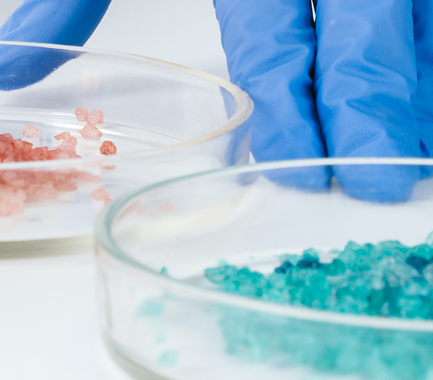Your contact
PENPET-Team - Hamburg

Christoph Meister
Sales
Tel. +49 (0) 40 - 675 7 99 30
sales@penpet.de
Get in touch with us.
Methyl ethyl ketone (MEK)
Methyl Ethyl Ketone (MEK) is one of the ketones and, along with acetone, is one of the most industrially used substances in this group. The compound serves primarily as a solvent. Methyl Ethyl Ketone is mainly obtained by dehydrogenating 2-butanol. With the help of copper and zinc oxide catalysts and temperatures between 400 and 500 °C, the hydrogen is released from the hydroxy group of 2-butanol. Small amounts of methyl ethyl ketone occur natural in, for example, bananas.
Methyl Ethyl Ketone is used as a solvent for resins, paints and plastics and is used in the manufacture of textiles, artificial leather, paraffin wax, adhesives and coatings, among other things. It is also used for degreasing metal surfaces, extracting oils and fats from natural resins, sterilizing medical tools and dewaxing lubricating oils. By reacting with hydrogen peroxide, methyl ethyl ketone peroxide can be produced from methyl ethyl ketone, which is used as a radical initiator in the polymerization of polyester resins.
PENPET is a multi-sourcer of Methyl Ethyl Ketone (MEK) and holds its own REACh-registration, so we can be a reliable and competitive supplier for you in the long term. We look forward to receiving your inquiry for an individual offer. Delivered as a liquid in tank containers. Other types of packaging would also be possible on request.
CAS no. 78-93-3
EINECS no. 201-159-0
Molecular formula: C4H8O
Synonyms: MEK, butanone, butan-2-one, 2-butanone, butanone, ethyl methyl ketone, methyl propanone, methyl acetone
Areas of application: Solvent, production of methyl ethyl ketone peroxide, denaturant for alcohol.
More Informationen
The carbonyl group is characteristic of the ketone group of substances. This consists of an oxygen atom and a carbon atom, between which there is a double bond. In methyl ethyl ketone (MEK), this functional group is located between a methyl group and an ethyl group. Overall, the molecule is a four-carbon ketone, which explains the alternative names butanone, 2-butanone, and butan-2-one.
Methyl ethyl ketone (MEK) is a colorless liquid with a low viscosity and high volatility. Their odor is similar to that of acetone. Due to the polarity of its carbonyl group, methyl ethyl ketone is easily soluble in water up to a certain concentration. However, its solubility decreases with increasing temperature. Methyl ethyl ketone forms azeotropic mixtures with water and many organic solvents. These have a common boiling point so that they can no longer be easily separated by distillation.
In the absence of atmospheric oxygen, methyl ethyl ketone (MEK) is stable at room temperature. In contact with atmospheric oxygen, peroxides are formed over time. With the help of catalysts, methyl ethyl ketone can be oxidized in air to diacetyl, which has a second carbonyl group. The compound tends to self-condense in acidic and basic media. With strong oxidizing agents such as nitric acid, it forms mixtures of propionic acid and formic acid. Methyl ethyl ketone attacks aluminum and should therefore be stored in containers made of steel and stainless steel.
Methyl ethyl ketone can react with most oxidants and cause fires. It is highly flammable and explosive. The vapors of the highly volatile compound are heavier than air and can accumulate and spread unnoticed on the ground. Methyl ethyl ketone should therefore be kept away from all types of ignition sources. Even slight sparks can trigger a violent reaction. The decomposition of methyl ethyl ketone by heating and burning emits acrid and noxious gases.
Methyl ethyl ketone (MEK) can be harmful if it comes into contact with skin, if it is swallowed or if it is inhaled. The compound causes severe eye irritation. Methyl ethyl ketone has a degreasing effect on the skin and can cause inflammation with frequent exposure. Affected areas of skin should be rinsed immediately with soap and water. After contact with the eyes, in addition to thorough rinsing with water, an ophthalmological treatment is required. Inhalation of methyl ethyl ketone vapors is irritating to the respiratory tract and may cause headache, nausea, drowsiness, dizziness, unconsciousness and brain dysfunction and convulsions. Open containers of the volatile compound therefore pose a significant health risk.
